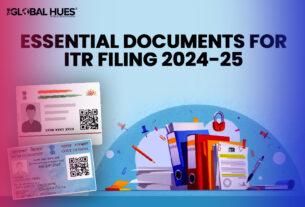As a contracts for difference (CFD) trader, you’re typically ready to lean into risk. Unlike stock trading, which involves directly buying and selling company shares, you don’t own the asset you’re transacting with—rather, you’re speculating on its price movement and doing so with leverage. That allows you to operate with an enormous potential for losses and gains.
Risk-taker or not, though, you don’t want to trade CFDs blindly. Instead, the best CFD traders aim to achieve an optimal risk/reward ratio using a plan resilient to market changes. If that sounds like something you want to attain, read on to learn how to become a better CFD trader.
Determine your trading timeframe
This is something you need to decide on if you want more opportunities to reap returns from your trades. That’s because your trading timeframe will determine things like what you need to look for in a trading platform and the best trading strategies for you to employ. There’s no wrong answer to it, either: simply decide how long your trades take based on your preferences and risk appetite.
You might want to stick to CFD day trading if you gravitate toward quick decision-making and rapid market analysis. Focusing your trading within these hours allows you to capitalize on intraday price fluctuations. However, if you prefer extended transactions that require less frequent engagement, you can speculate on the long-term performance of an asset through position trading.
Formulate a trading strategy
As with other types of trading, CFD trading isn’t risk-free. It’s not something you want to do by instinct. That’s why even the best CFD traders use strategies to determine how and when to act. As a trader with more experience, you’ll have the skill to tailor your own strategy by considering your trading goals, attitude to risk, and available capital.
Once you’re aware of these factors, you can select from the trading strategies available to you based on your timeframe. For example, if you’ve decided you’re a position trader, you can try a pullback and retracement trading strategy for your CFDs—waiting for temporary price falls or rises to jump into an existing trend.
Use fundamental analysis and technical analysis
Information about CFD trends and the factors that affect them is available to all traders—but what will help you pick out the best CFD contracts and incur profits is how well you perform your analyses. There are two types, though you can do a mixture of the two: fundamental analysis and technical analysis. Fundamental analysis involves examining factors such as balance sheets, trading history, and industry performance. For example, you can look at a company’s financial statements and other publicly available information to see how well it’s doing and whether it’s worth speculating on its price increase. Technical analysis, on the other hand, evaluates historical data and configures patterns via indicators like trading volume and average directional index.
Since conducting such analyses can be complex, make sure you know how to use tools like economic calendars, trading signals, and technical indicators. That way, you can quickly and more easily parse and interpret market data. Online trading educational sites platforms commonly provide these tools, so they shouldn’t be challenging to find and use.
Diversify over time
Starting out, you don’t want to spread yourself too thin in your CFD trading. Remember that transacting in CFDs is high-risk, and putting a hand in too many markets at once can confuse you and consequently cause you losses. However, once you have a handle on your trading strategy, diversification is excellent at lowering risks. The best way to do that is by not limiting yourself to trading CFDs from a single sector.
Instead, use a CFD trading platform that gives you access to CFDs across multiple markets like currencies, stocks, and commodities. Such CFDs usually correlate to the best-performing assets worldwide, as well. By diversifying your CFD trades through these means, you face less risk and can still expect returns from currency CFDs even if the market for metal commodities is currently down, for example.
Understand your position size
Knowing your position size is paramount in CFD trading. This is the total market exposure of your CFD trades, which can help you identify to what extent you should undertake more trades or slow down per your budget. Recall that CFDs are leveraged—your position size will be more than your initial deposit, and you stand to lose more than what you budget for a particular trade. A trading platform that automatically monitors your trades and generates reports can help you more easily calculate your position size.
Practice risk management
As your experience and the complexity of your trades grow, so does the risk they carry along with it. There’s one feature that can give you peace of mind—and if you haven’t used this feature much before, now’s the best time to start doing so. Stop-loss orders are automated commands to buy or sell once a CFD reaches a specific price point. For example, you purchase a CFD and program a stop-loss order 10% below the buying price. The order will activate if the price drops, selling the CFD immediately to protect against excessive losses. This enables you to have better control over your trading account and provides you with a safety net when CFD trading.
Record your trading results
Recording your trading results can significantly enhance your skills and give you an edge in future transactions. You’ll be able to evaluate your strengths and weaknesses, using your findings to improve your current trading strategies. Keeping records is also a great way to discover if you have any noticeable trading patterns that are helping or hurting your returns.
To get started, use a physical or digital notebook that can act as your trading journal. For every trade, list the date and time it was placed, the asset you speculated on, its trade direction, its entry and exit price, trade size, profit or loss incurred, and any extra notes you have. Though it requires you to pay closer attention to detail, making the effort to record your trading results is something that can pay off exponentially in the long run.
CFD trading can be both risky and rewarding. Fortunately, the above tips show it’s also something you can continue to learn about and improve at.




